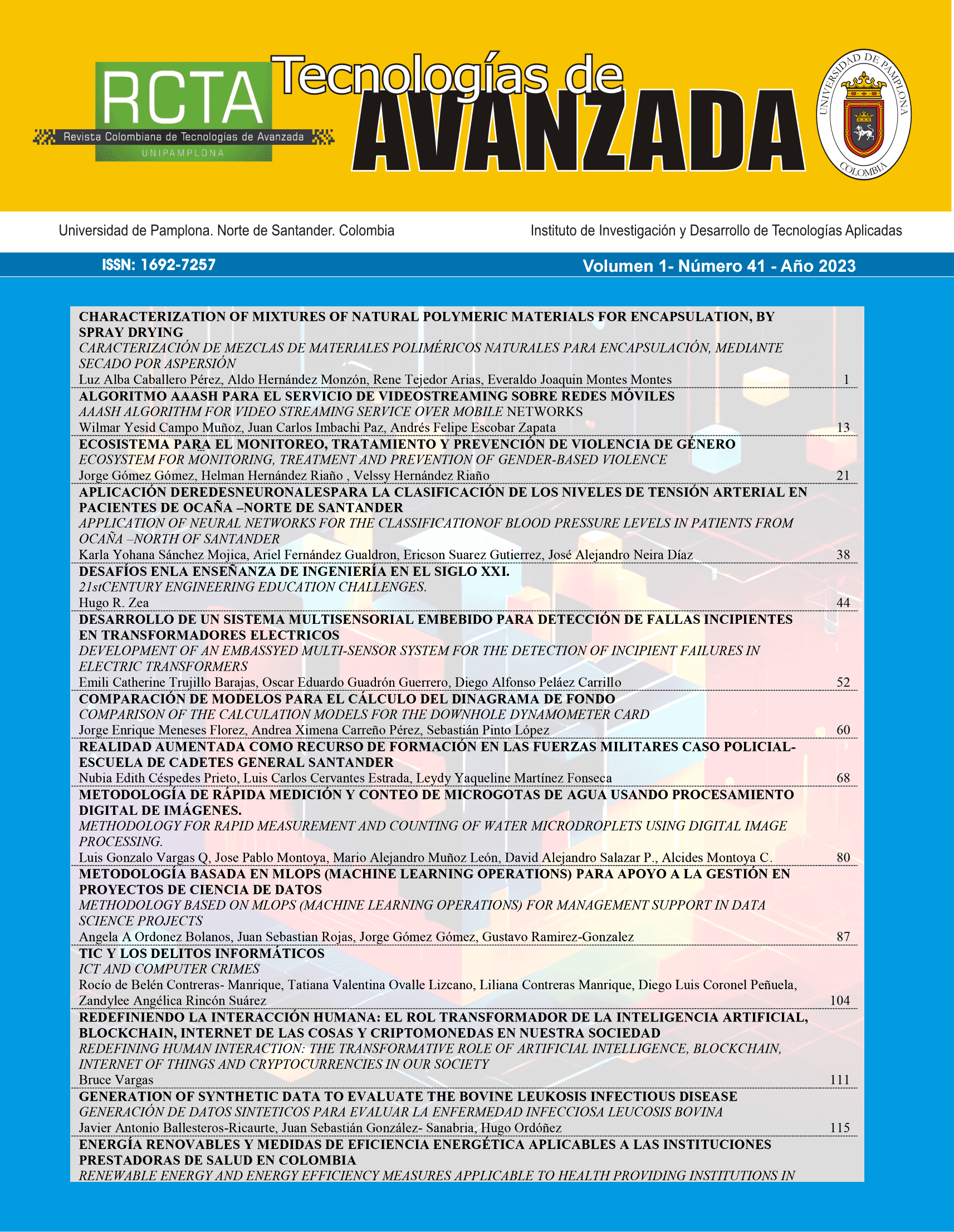Visualización general de las capacidades dinámicas: basado en un análisis bibliométrico
DOI:
https://doi.org/10.24054/rcta.v1i41.2559Palabras clave:
capacidades dinámicas, bibliometría, clusterResumen
Se analiza la producción científica relacionada con capacidades dinámica mediante el análisis bibliométrico realizado a partir de documentos recuperados de la base de datos SCOPUS correspondientes al período 2017- 2020, implementando una metodología cuantitativa de similitudes y representación de relaciones entre términos o palabras mediante mapas bibliométricos usando el software VOSviewer. La realización del estudio logró como resultado las visualizaciones de estructuras temáticas en las áreas de investigación de capacidades dinámica, permitiendo la identificación nueve (9) clusters que definen las principales corrientes de investigación. Los mapas revelan para el período analizado, una existencia de macrolínea de investigación robusta, que encierra trabajos sobre capacidad dinámica, adaptabilidad, integración, reconfiguración, estrategia, planeación estratégica, trabajo en equipo, transformación, capacidad de: absorción, adaptación, innovación; rendimiento financiero, desarrollo de nuevos productos, cultura organizacional, productividad, resiliencia, estrategia de flexibilidad, entre otros; sin embargo a nivel global, en especial en Latinoamérica, se muestra una incipiente investigación respecto a Capacidades Dinámicas específicas; en este caso las relacionadas con la gestión del talento humano. Asimismo, se identificó un eje de investigación consolidado en las ciencias de gestión. Se propone a futuro construir mapas bibliométricos, con otras bases de datos de forma comparativa que permitan analizar las capacidades dinámicas, sus elementos constituyentes y su evolución.
Descargas
Referencias
Aguilar Z., J. y Yepes., E. (2006). Gestión de capacidades dinámicas e innovación: una aproximación conceptual. Revista de Ciências da Administração, vol 8, No 16.
Börner K., Chen C. y Boyack KW. (2003). Visualizing Knowledge Domains. Annu Rev Informa Sci.
COMISION ECONÓMICA PARA AMÉRICA LATINA Y EL CARIBE – CEPAL (2022.)
Los impactos sociodemográficos de la pandemia de COVID-19 en América Latina y el Caribe. (LC/CRPD.4/3)
Davies A. y Brady, T. (2016). Explicating the Dynamics of Project. International Journal of Project Management, vol 34, No 2, 314-327. Ingeniería de Control Moderna, Prentice Hall, Cuarta edición, Madrid.
Fergnani A. (2019). Mapping futures studies scholarship from 1968 to present: A bibliometric review of thematic clusters, research trends, and research gaps. Futures, vol 105.
Ficha técnica Scopus. (2022) https://www.elsevier.com/ data/assets/pdf_fi le/0017/114533/Scopus-fact-sheet- 2022_WEB.pdf
Garfield E. y Sher IH. (1993). Keywords PlusTM. Algorithmic derivative indexing. J Am Soc Inf Sci, vol 44.
Helfat C. (1997). Conocimientos técnicos y complementariedad de activos y acumulación de capacidad dinámica: el caso de la I + D. Revista de gestión estratégica, vol 18, No 5.
Helfat C. y Peteraf, M. (2003). The Dynamic Resource-Based View: Capability Lifecycles. Strategic Management Journal, vol 29.
Mendoza J. (2017). Competitividad e innovación. El poder cimpetitivo de la innovación. Ediciones Universidad Simón Bolívar.
Pavlou P. y El Sawy, O. (2011). Understanding the Elusive Black Box of Dynamic Capabilities. Decision Sciences, vol 42.
Rincón M., H. y Guerrero P., D. (2019) Visualización de la relación entre Estrategia - Capacidades Dinámicas (CD) – Ventaja Competitiva. Un análisis basado en mapas bibliométricos aplicados a los registros en Web of Science (2001-2018). Revista Espacios, Vol 40. No 40.
Teece D. (2014). The Foundations of Enterprise Performance: Dynamic and Ordinary Capabilities in an (economic) Theory of Firms. The Academy of Management Perspectives, vol 28, No 4.
Van Eck N. y Waltman L. (2010). Software survery: VOSviewer, a program for bibliometric mapping. Scientometrics, vol 84.
Zahra S. y George, G. (2002). Capacidad de absorción: revisión, reconceptualización y ampliación. Academy of Management Review, vol 27, No 2.
Zapata G., J. y Zapata R., A. (2018). Capacidades Dinámicas de la Organización: Revisión de la Literatura y un Modelo Propuesto. Investigando Administración, vol 47, N0 121.
Ulrich D. y Dulebohn J., H. (2015). Are we there yet? What's next for HR?. Human Resource Management Review, vol 25, No 2.
Descargas
Publicado
Número
Sección
Licencia
Derechos de autor 2023 Cindy Paola Garay Suárez, Álvaro Santamaría Escobar, Jhon Pablo Martínez Benítez, Dani Daniel D´luis Flórez, Marisol Monterroza Guzmán

Esta obra está bajo una licencia internacional Creative Commons Atribución-NoComercial 4.0.











